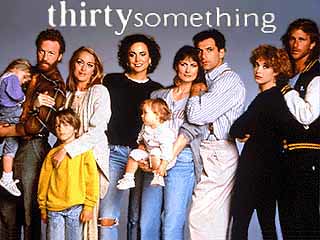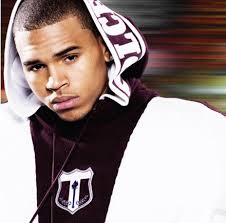 Sunday, February 28, 2010. I wake up, brew a pot of coffee, and sit down to read the Los Angeles Times. Then my world shifts ever so slightly.
Sunday, February 28, 2010. I wake up, brew a pot of coffee, and sit down to read the Los Angeles Times. Then my world shifts ever so slightly.
On the front page of the Calendar section I see the headline, “Redeploying Gender.” Jumping off the page this time around, the gender in question is masculinity. Finally, splashed across the corporate page of a mainstream publication, gender is no longer code for women! I read this and it feels damn good.
The article in question is about film director Kathryn Bigelow’s war movie and Oscar-award front-runner, The Hurt Locker. More than just a blow-’em-up extravaganza, journalist Reed Johnson suggests that Bigelow’s film “shakes up traditional ideas of what men are and how they act.” Bigelow likes the big bang in her movies — guns, explosions, a rough-punch to the gut. And in The Hurt Locker, there’s plenty of that rugged, isolated individualism that so often defines modern manhood. But Bigelow is more deeply interested in the warrior codes of masculinity that are intertwined with men’s fears and feelings, and their conflicted impulses around loyalty and leadership, posturing and parenthood.
“Kathryn,” I want to say out loud (as if she were in my living room), “So am I!” And so are other writers thinking deeply about masculinity, like Jackson Katz, Judith “Jack” Halberstam, and Sinclair Sexsmith, just to check a few in the genre.
My caffeinated heart beats a bit faster with excitement and I continue reading the Times.
The article is quick to note that Kathryn Bigelow’s perspectives on masculinity should not be labeled “feminist” and even quicker to comment that a feminist label can be a death knell for women working in Hollywood. But as my eyes skip to the right-side of the page, I see film critic Betsy Sharkey has also invoked the F-word in a companion article, this time in reference to director James Cameron’s exploration of “what women want, how they define themselves,” and — to me, a key point — “how society values [women’s] worth.” It’s troubling that while Bigelow (and other women) face professional risk for getting labeled a feminist, Cameron stands to benefit. It’s a jarring juxtaposition.
But, this problem notwithstanding, Johnson counterposes that Cameron and Bigelow’s partially intertwined careers suggest a growing fluidity and flexibility in how gender perspectives function in film. [The italics are my added enthusiasm.]
Did I just see this right? This beautifully written, politically trenchant, gender-astute sentence — on the pages of the Sunday Times? With write-ups like this and more projects on the horizon (Michael Kimmel’s popular book Guyland is optioned by Dreamworks), the day is looking even brighter here in sunny SoCal.
Still, there’s a ways to go in cracking the celluloid ceiling.
As Jane Fonda comments on Huffington Post, there are great moments in film this year, thanks to women in Hollywood. Five years ago, Fonda, with Gloria Steinem and Robin Morgan, founded the Women’s Media Center to keep pointing out that “women are not only assets but requirements for a truly democratic media, and for strong, innovative entertainment.” We need to improve the numbers of women and people of color among the Hollywood players. But it helps that directors like Bigelow are shifting images of gender and masculinity in our everyday movie faves. This, too, is an important step toward gender justice.
Oh, and postscript. Thanks to Reed Johnson, I have a clever new phrase that I plan to use in a sentence today: Stealth Feminist. Brill!

 The Mommy Myth That Will Not Die: Bella Swan and Global Motherhood
The Mommy Myth That Will Not Die: Bella Swan and Global Motherhood





 Girl With Pen’s newest Guest Blog comes to you from the awesome Therese Shechter, documentary filmmaker of I Was a Teenage Feminist and The American Virgin. Here, Therese susses out the sexism in the retro TV fave, thirtysomething.
Girl With Pen’s newest Guest Blog comes to you from the awesome Therese Shechter, documentary filmmaker of I Was a Teenage Feminist and The American Virgin. Here, Therese susses out the sexism in the retro TV fave, thirtysomething. Therese Shechter is a filmmaker, writer and activist whose documentary
Therese Shechter is a filmmaker, writer and activist whose documentary 
 Miley Cyrus is all grown up. Yes, I am going to squeeze Simone de Beauvoir and Miley Cyrus into the same sentence. If you’re following Miley’s career these days, you’ll know that she’s “becoming a woman†in the media and entertainment worlds. Simone de Beauvoir definitely had it right, and rarely do we see so clearly exactly how someone “becomes†a woman. But really, this is her “adult,†womanly roll-out, and just to be sure we get it the media coverage makes clear that Miley is all “grown up†now. She’s on the cover of
Miley Cyrus is all grown up. Yes, I am going to squeeze Simone de Beauvoir and Miley Cyrus into the same sentence. If you’re following Miley’s career these days, you’ll know that she’s “becoming a woman†in the media and entertainment worlds. Simone de Beauvoir definitely had it right, and rarely do we see so clearly exactly how someone “becomes†a woman. But really, this is her “adult,†womanly roll-out, and just to be sure we get it the media coverage makes clear that Miley is all “grown up†now. She’s on the cover of  Time for some serious talk about men’s violence. I’ll break it down to make a difficult point really simple.
Time for some serious talk about men’s violence. I’ll break it down to make a difficult point really simple. Everyone should take a look at this
Everyone should take a look at this 